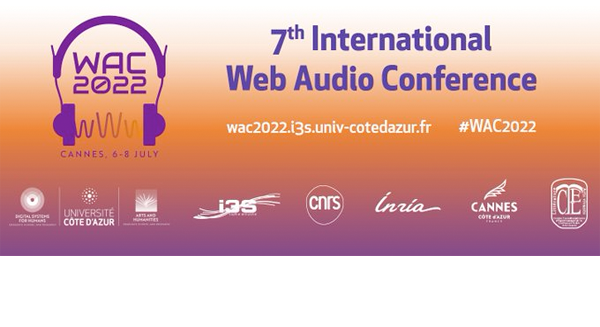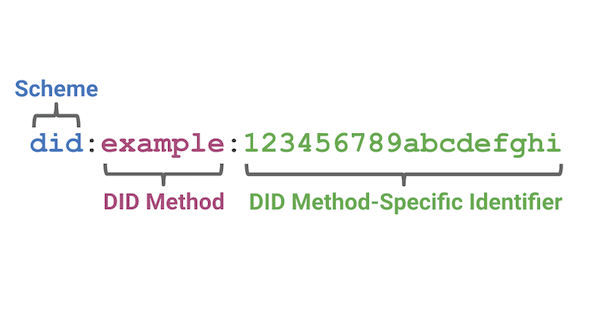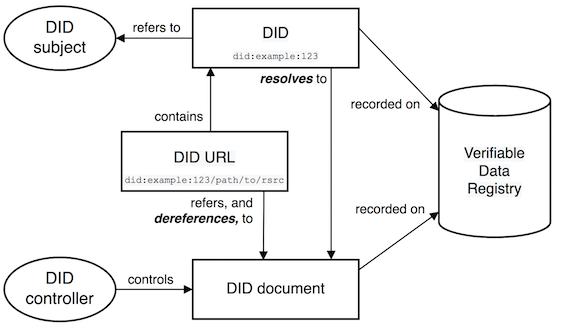🗓️July@w3c: #JavaScript course, Web #audio conference, etc. See more in https://www.w3.org/participate/eventscal.html
5 July: opening a new session of the @w3cx "#JavaScript Introduction" #MOOC w/ Prof. @micbuffa via @edxOnline
Enroll now! https://www.edx.org/course/javascript-introduction
https://twitter.com/w3cdevs/status/15428718207093719058 July: At #wac2022 in Cannes 🇫🇷, the @w3c Web Audio #WorkingGroup, via @padenot, will give an update of recent work and what new features to expect https://wac2022.i3s.univ-cotedazur.fr/node/27 @WebAudioConf
https://twitter.com/w3cdevs/status/1542871825738338308An opp. you can't miss! https://twitter.com/Stand_ICT/status/1544263974090317824
https://twitter.com/w3cdevs/status/1544298510354350082#CSS Color 4 describes properties which allow authors to specify the foreground color and opacity of the text content of an element #timetoimplement
https://www.w3.org/TR/css-color-4/ https://twitter.com/w3c/status/1544214340303216640
This module allows specifying colors in other color spaces than sRGB. It has been discussed during last year's #W3CWorkshop: https://www.w3.org/Graphics/Color/Workshop/
https://twitter.com/w3cdevs/status/1544308779965190149To learn more, check also the workshop's 🎬 talks that are avail. on our #YouTube channel: https://www.youtube.com/playlist?list=PLNhYw8KaLq2UP_XETn9k_bh2338EWGbSd
https://twitter.com/w3cdevs/status/1544308784495038465We invite public comments (through 2 August 2022) on the proposed charter for a 🆕 RDF-star #WorkingGroup: https://www.w3.org/2022/06/proposed-rdf-star-wg-charter.html #RDFstar
Why is it important? 🧵👇 https://twitter.com/w3c/status/1543855611045109760
RDF-star (née RDF*) was first introduced in 2014 by @olafhartig and Bryan Thompson as a more concise and usable alternative to reification ("statements about statements"): https://arxiv.org/abs/1406.3399
https://twitter.com/w3cdevs/status/1544328655639306240Since then, it has been adopted by an ever increasing number of #RDF implementations, both open-source and commercial: https://w3c.github.io/rdf-star/implementations.html
https://twitter.com/w3cdevs/status/1544328661263843333The ability of RDF-star to attach information to the *edges* of an RDF graph makes it a good candidate for bridging the gap between popular #PropertyGraph databases and the RDF world. In the age of #KnowledgeGraph, this increased interoperability will play a crucial role
https://twitter.com/w3cdevs/status/1544328665802104832For a year and half, the RDF-DEV #CommunityGroup worked on a report to explore how RDF-star could be integrated in the #RDF and #SPARQL @w3c #WebStandards: https://www.w3.org/2021/12/rdf-star.html
The proposed Working Group is the next step in this evolution.
https://twitter.com/w3cdevs/status/1544328663583399937Join the #WebXR #WorkingGroup! Its scope is to develop standardized #APIs to provide access to input and output capabilities commonly associated with XR hardware. Read more: https://www.w3.org/2022/07/immersive-web-wg-charter.html https://twitter.com/w3c/status/1545334026189283329
https://twitter.com/w3cdevs/status/1547100370287136770What are color gamuts❓ Read @svgeesus' blog post: https://svgees.us/blog/whatGamuts.html❗️ https://twitter.com/svgeesus/status/1548401193407246336
https://twitter.com/w3cdevs/status/1548678820739399682Web apps cannot easily leverage such an extended workspace though. The Multi-Screen Window Placement #API aims to fix this!
Operating systems let users extend their visual workspace through additional screens. Various platform #applications (slideshow apps, financial apps, conference room apps...) leverage this extended workplace to create better experiences: https://www.w3.org/TR/2022/WD-window-placement-20220630/ #timetogiveinput https://twitter.com/w3c/status/1542421407279218690
https://twitter.com/w3cdevs/status/1549317995662557185The API will allow #web applications to initiate a multi-#screen experience from a single transient user activation. This includes the ability to place content on specific screens and show an element fullscreen on a specific screen.
https://twitter.com/w3cdevs/status/1549317997327794177Congrats to editors @manusporny, @rhiaro, @peacekeeper and @drummondreed for the newly published @w3c #WebStandard "Decentralized Identifiers (DIDs) v1.0": https://www.w3.org/TR/2022/REC-did-core-20220719/ #timetoadopt!! https://twitter.com/w3c/status/1549368259878723585
DIDs are a new type of identifier that do not require a centralized registry. It empowers everyone on the Web to generate their own identifiers and take control of their own #identity and relationships while also providing greater #security and #privacy
https://twitter.com/w3cdevs/status/1549453553584029696Coupled with #w3c Verifiable Credentials, DIDs are being used across a number of markets (such as governments, retailers, etc.) where #identification and #data authenticity is a concern. Read the numerous testimonials from W3C members and the industry: https://www.w3.org/2022/07/pressrelease-did-rec.html.en#testimonials
https://twitter.com/w3cdevs/status/1549453565306994689DIDs and DID documents can be adapted to any modern blockchain, distributed ledger, or other decentralized network capable of resolving a unique key into a unique value. Check the DID method registry for a list of known DID method specifications: https://w3c.github.io/did-spec-registries/#did-methods
https://twitter.com/w3cdevs/status/1549453572571537408DIDs are #URIs that associate a DID subject with a DID document allowing trustable interactions associated with that subject
https://twitter.com/w3cdevs/status/1549453569304285186Find more details and info in the DID primer https://w3c-ccg.github.io/did-primer/
https://twitter.com/w3cdevs/status/1549453576220672000


